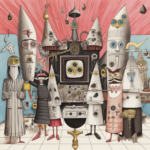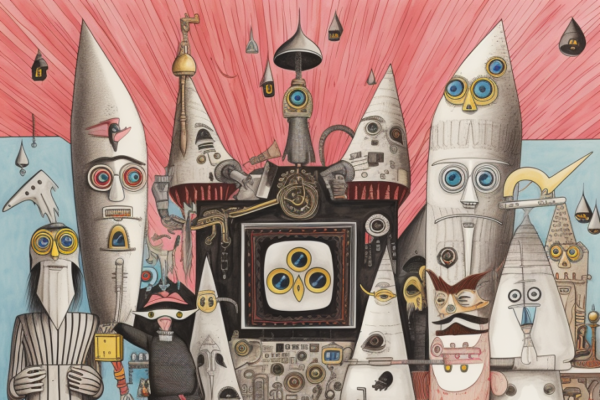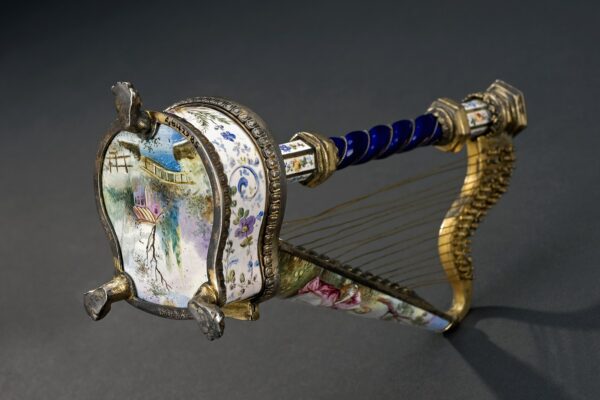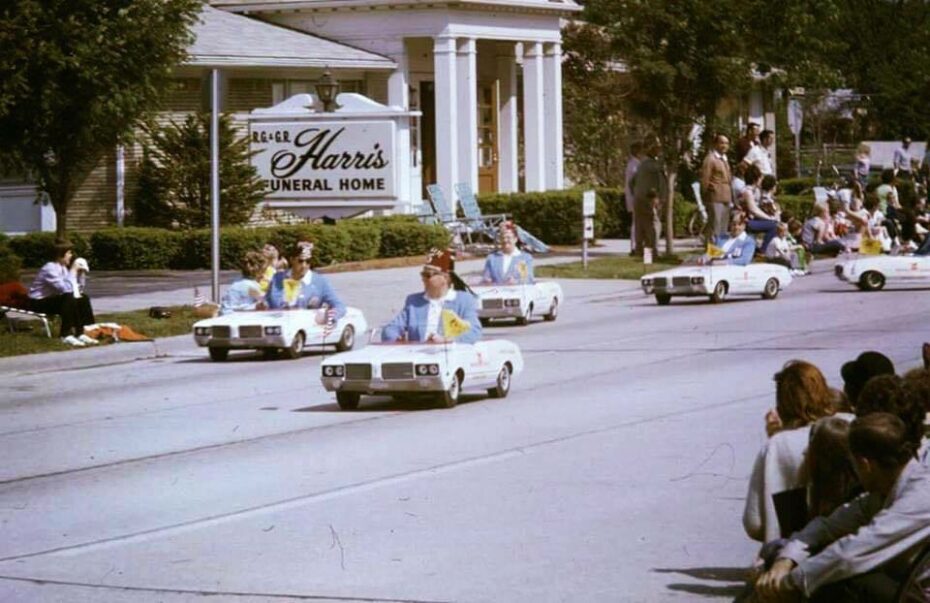
We do love a good plunge into worlds apart – filled with secret society conspiracies and folks living off-grid or on the fringes of society. The latest curious collective to pique my interest is perhaps the quirkiest of masonic orders, called “The Shriners”, formally known as the Ancient Arabic Order of the Nobles of the Mystic Shrine (AAONMS) – a name that sounds like it came straight out of an Indiana Jones adventure. If you’re American, perhaps you’ve seen them before at a local small town parade, sporting their distinctive red fez hats and driving those delightfully miniature cars with the gusto of children on Christmas morning. They have a more secretive arm of the society too, but we’ll get to that. So, who are these mysterious gentlemen? Buckle up, hold onto your fez, and let’s take a quirky ride through the fascinating world of the Shriners.
Their origin story is a tale of two freemasons, named Walter M. Fleming, a distinguished doctor, and Billy Florence, an actor with a knack for the dramatic. These two men loved the serious, structured traditions of Freemasonry but felt that it could use a little more… let’s say, pizzazz. The year was 1870, and during a trip to France, Florence attended a party with an Arabian theme and was struck by the pageantry and fun of it all. This was the light bulb moment: why not create a Masonic organisation that combined the tenets of Freemasonry with the flair and social merriment of a Middle Eastern bazaar? And so, the Ancient Arabic Order of the Nobles of the Mystic Shrine was born. The Shriners were established as a fraternity focused on fellowship, fun, and philanthropy — with a particular emphasis on that middle “fun” part.
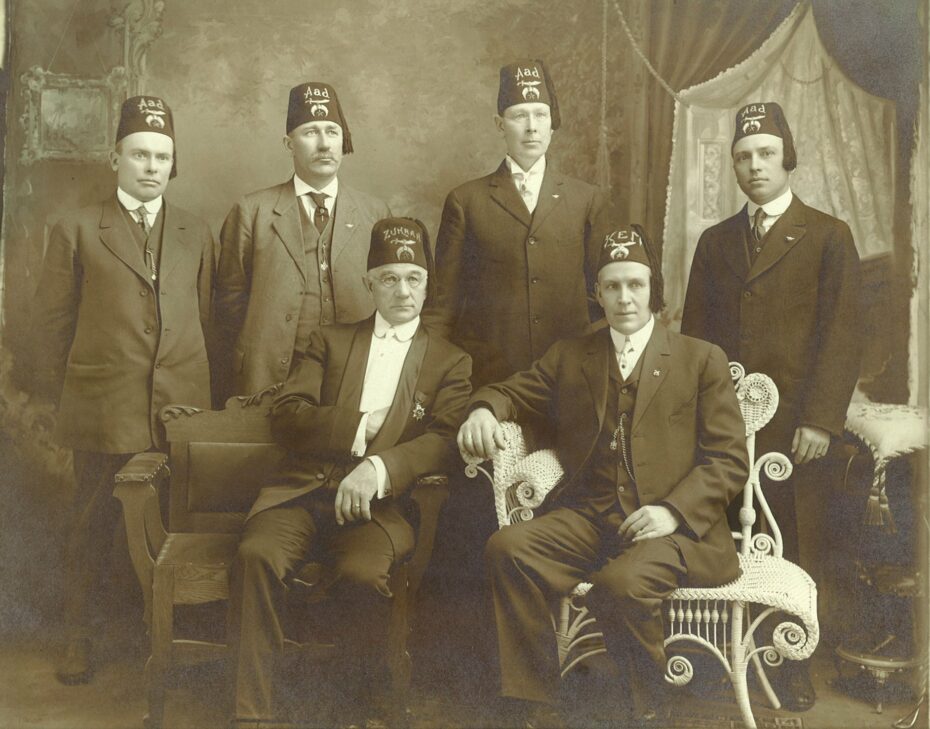
The Shriners, in keeping with their Masonic roots, have their own unique rituals and ceremonies. These involve a dash of mystery and a pinch of parody, often poking gentle fun at the solemnity of traditional Masonic rites. Membership involves an elaborate initiation ritual (think secret passwords and symbolic journeys), all conducted with a light-hearted spirit and a heavy dose of camaraderie.
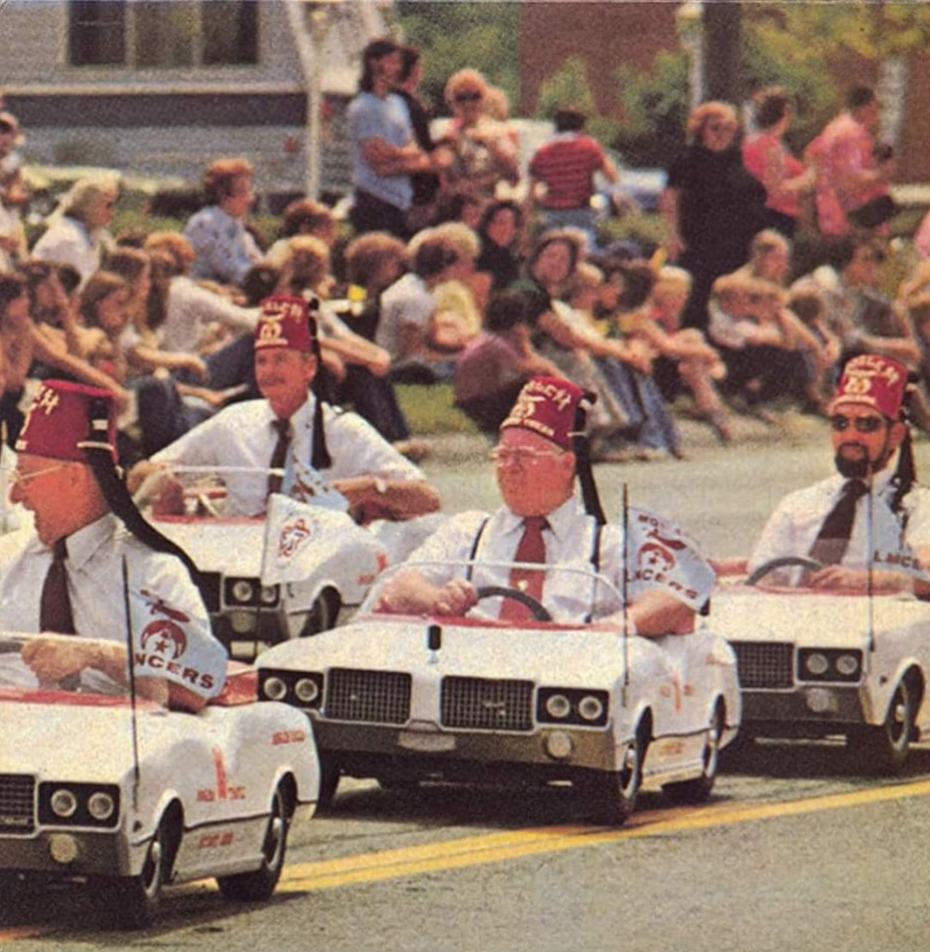
The group’s Middle Eastern theme is apparent in the use of the fez — those iconic red hats with a black tassel. The fez (after the city of Fez in Morocco, where the dye for the hat was originally produced) has long been a symbol of Moroccan national pride, and was chosen as the Orders official headwear to add a worldly, well-travelled element to the group’s identity. The Shriner fez isn’t just plain red however; it often features elaborate embroidery, colorful designs, and a hefty dose of jeweled embellishments. These designs aren’t just for show — they convey a lot about the wearer’s identity within the organization. Most Shriners’ fezzes prominently display the name of the specific “temple” (the local Shrine chapter) to which the wearer belongs. This name is often spelled out in ornate, jewel-studded letters across the front of the fez, making it easy to identify which temple the wearer represents. The jewels themselves can range from simple sequins to more elaborate gemstones, often indicating the wearer’s rank or position within the organization. The fez also features the emblem of the Shriners — a crescent and scimitar — which is typically embroidered on the front. This emblem is symbolic of the fraternity’s roots and its connection to a Middle Eastern motif.
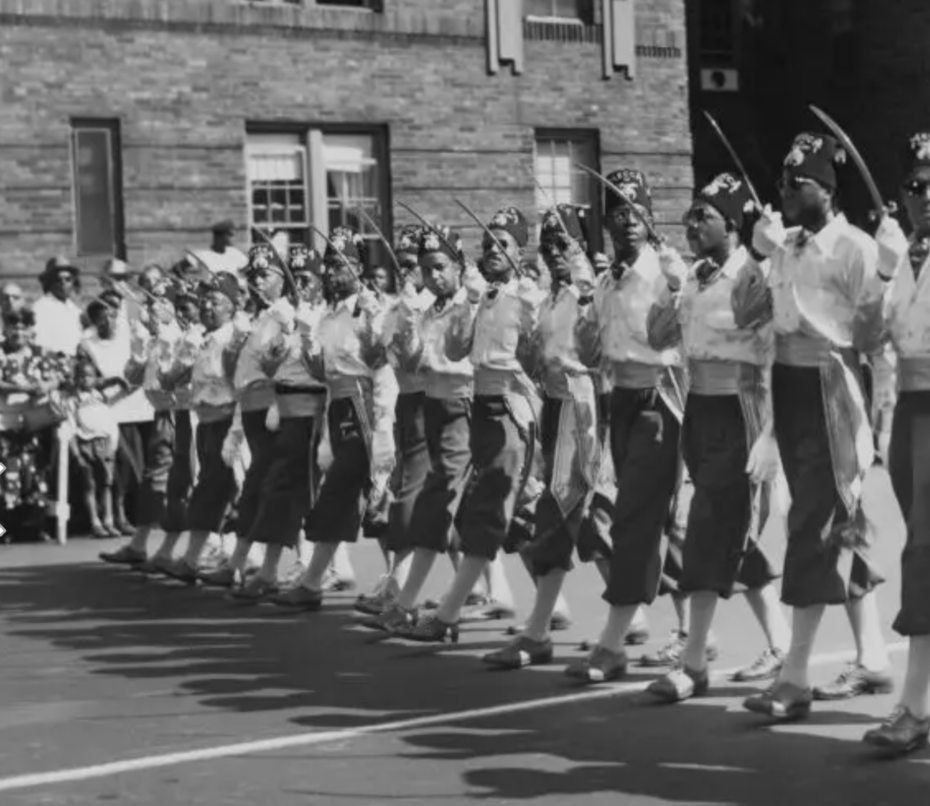
So who wants to talk about the elephant in the room? Fine, I’ll go first – is it cultural appropriation? Is the Shrine a mockery of Middle-Eastern culture? Oh dear. Can open, worms everywhere. It’s a tricky one. Arguably, it’s no more of a mockery than naming a sports team after a Native American tribe. Arguably, the society is an almost textbook example of cultural appropriation. But perhaps the question that really needs asking is if the appropriation is “okay” given context. Knowing the history, circumstances and environment it was founded in, it’s probably safe to assume the Shriners most distinctive concept came out of “orientalism,” a Western fascination with near and Middle-Eastern culture and imagery. And of course, that did not come from a place of deep understanding, although not necessarily from mockery either. Does it feel like they meant well but just didn’t really know better or take the time to try to know better?
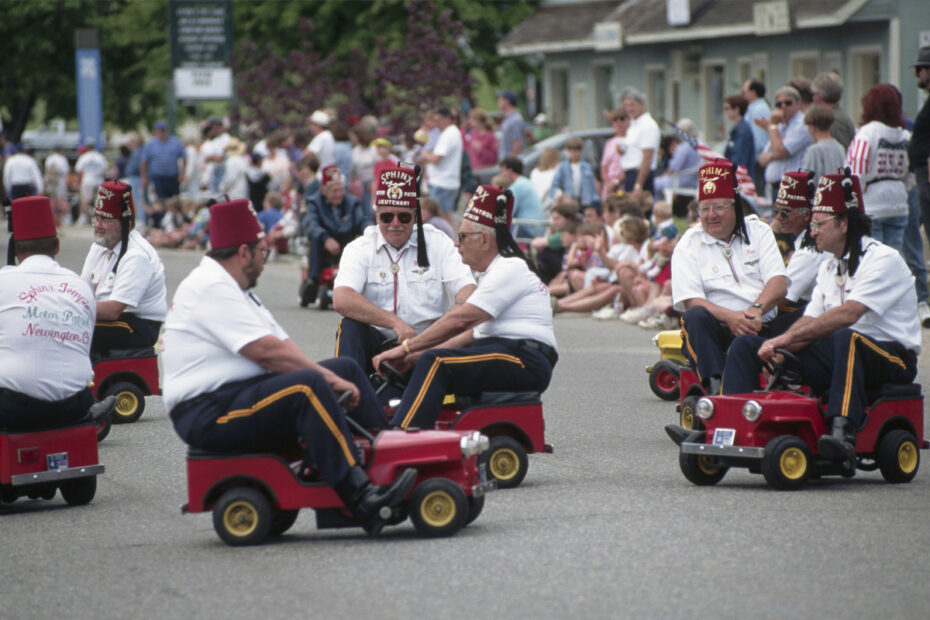
On a lighter note – we have to talk about those parades of miniature cars. The Shriners are perhaps best known for their public appearances, especially at parades where they zoom around in their tiny cars doing wheelies and performing acrobatics, often dressed as clowns. It began in the mid-20th century as a way to stand out in parades and public events. These small cars, often replicas of vintage vehicles or specially modified go-karts, were introduced to create a lively, eye-catching spectacle that would draw attention, spread joy, and make people smile. Some are miniature replicas of classic cars, like Model Ts, while others are custom-built creations or modified go-karts.

The Shriners’ car crews, sometimes known as “motor corps” or “drill teams,” are organized groups within the local temples. Members of these teams often take great pride in maintaining, customizing, and decorating their tiny cars. For many, it’s a serious hobby. But ultimately, the idea was simple: if you can capture the crowd’s attention with something unexpected and fun, you can better promote the Shriners’ message of goodwill and philanthropy.
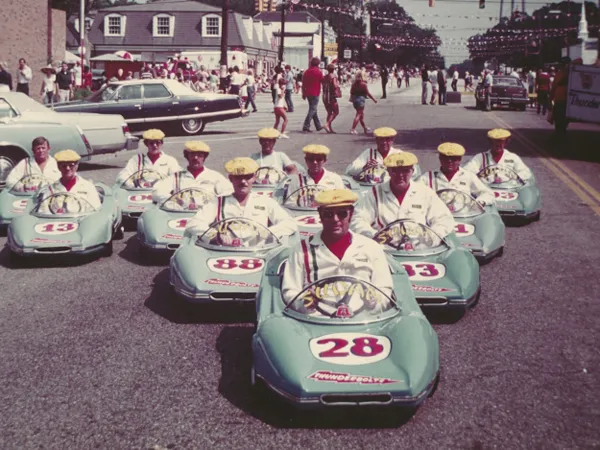
Behind the jovial façade of fun and games lies a serious commitment to philanthropy. In 1922, the Shriners opened their first hospital for children in Shreveport, Louisiana. Today, Shriners International operates 22 Shriners Hospitals for Children across North America. These hospitals provide specialised pediatric care, focusing on orthopedic conditions, burns, spinal cord injuries, and cleft lip and palate, regardless of a family’s ability to pay. The hospitals have treated over 1.5 million children and are renowned for their cutting-edge medical research and patient care. All this is funded by the Shriners themselves, through fundraising events, public donations, and yes, those unforgettable parade performances.

Joining the Shriners isn’t quite as simple as showing up at a parade and hopping in a tiny car. To become a Shriner, you first have to be a Master Mason, which is the third and highest degree in the Masonic lodge system. Becoming a Master Mason involves a series of steps, rituals, and, of course, some secret handshakes. Once you’ve reached that level, you can apply to become a Shriner. The process is a bit like joining an exclusive club with a very specific dress code and a knack for joyful shenanigans. Fun fact: Col. Harland Sanders, founder of Kentucky Fried Chicken Restaurants was a Shriner. Now, just when you thought things couldn’t get more intriguing, let’s peel back another layer of this fez-covered onion and reveal the Shriners’ more secretive arm: the Royal Order of Jesters – who’s alleged sole ourpose is Mirth (amusement). Members must be existing Shriners to receive an invitation. A secret society within a secret society, think of them as the group’s even more exclusive, mischievous, potentially sinister cousin.
Founded in 1911 in Shriners’ own Indianapolis, the Royal Order of Jesters was born out of a desire for a bit more revelry, a bit more humor, and maybe just a little more secrecy. Unlike the broader Shriner organization, which emphasizes public charity and child healthcare, the Jesters focus on fellowship, mirth, and, well, jesting. Their motto? “Mirth is King.” What exactly do they do? That’s a bit of a mystery. The Royal Order of Jesters prides itself on its privacy, with its activities known primarily to its members (and maybe their bemused spouses). The group has its own set of rituals, symbols, and ceremonies, all shrouded in a veil of secrecy, befitting a group that exists primarily to have a good time away from prying eyes. Sounds like a recipe for a seedy frat party? You’re not far off.
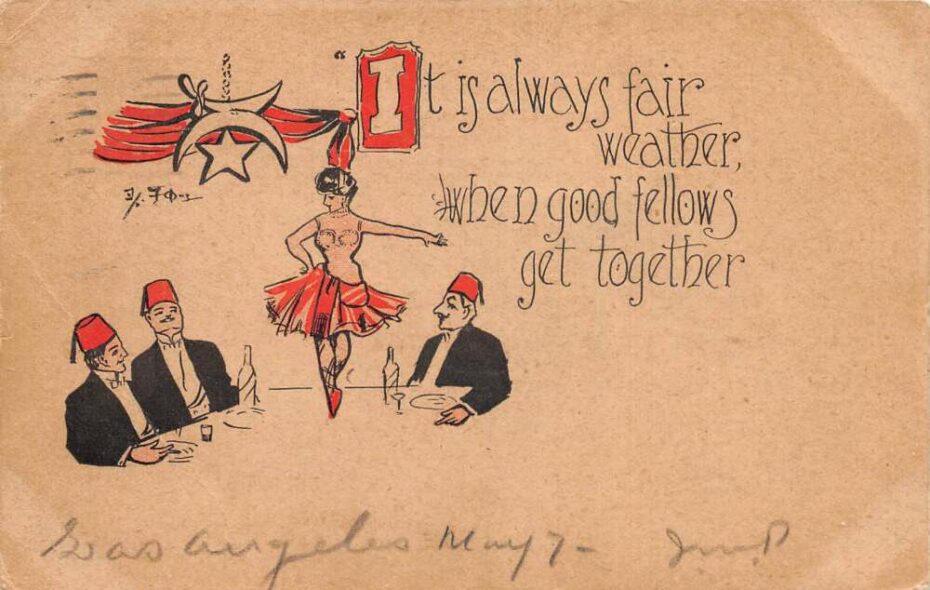
Indeed, some of the Jesters’ excesses are very much at odds with Freemasonry’s tenets of morality. Jesters, exotic dancers and sex workers have been keeping each other company for generations. In 2008, four public officials from Western New York, including State Supreme Court Justice Ronald H. Tills, two retired police officers and a law clerk, were convicted for transporting a prostitute over state lines to a Royal Order of Jesters event. According to federal prosecutors, the Jesters frequently employed strippers and prostitutes at their parties, with some of the prostitutes being illegally transported over state lines for Jesters events. The FBI has investigated these cases of racketeering, and there are rumours of other more sinister abuses, but the order has publicly stated that these actions involved a small number of members that acted out of the organizations guideline and internal regulations. Meanwhile masons across the world have called for the Royal Order of Jesters to be expelled from the craft.
We’re just going to throw it out there … it might sound crazy but, could the problem be the orders lack of female members? Such outlets of middle-class frustrations may have been a staple of the pre-and post-WWII culture, but it has not been embraced by the children of the Baby Boomers.
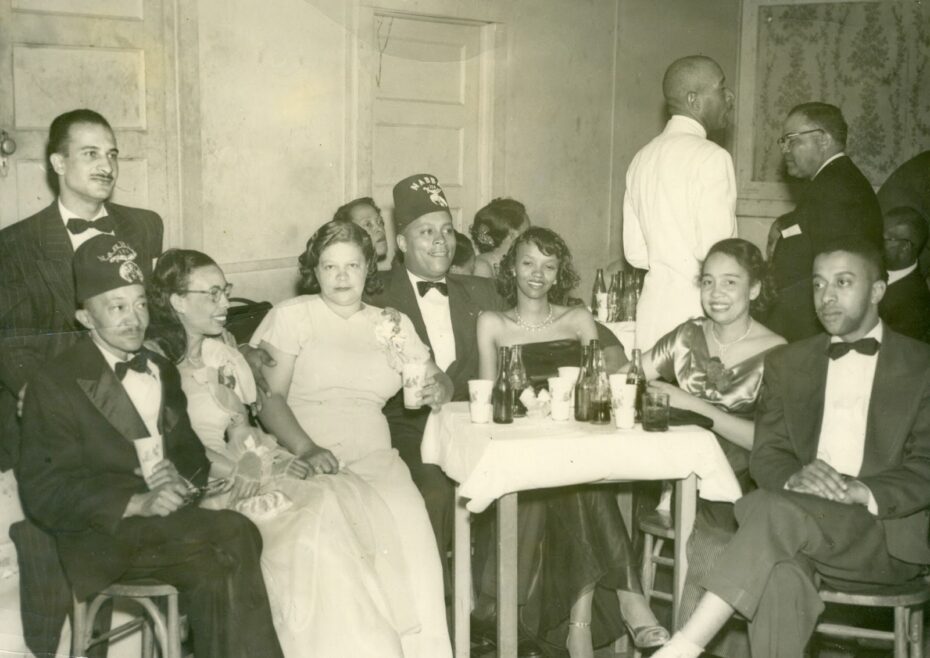
The good news is, the broader less-secretive organization of Shriners, have begun adapting to the times, launching social media campaigns in an attempt to engage with a new generation of members, notably reaching out to more women. For women and girls who are related to a Shriner, there are several independent organizations they’re eligible to join, including Daughters of the Nile (founded in 1913), The Ladies’ Oriental Shrine of North America (founded in 1914) and The Shrine Guilds of America (since 1947), all three of which support Shriners Hospitals for Children.
The ladies get to wear a bejewelled (white) Fez hat too, or a crown, but would we be happier if the ladies could officially become a Shriner and join the miniature car parades? Why yes, yes we would.
Once you’re in, they have monthly meetings at the local shrine temple where they cook out and drink. At their core, the Shriners remain true to their founding principles: spreading joy, building community, and providing life-changing medical care for children. Their hospitals remain among the finest philanthropic missions in the United States today. In the words of a Shriner motto: “No man stands so tall as when he stoops to help a child.”
So, the next time you see a Shriner donning their fez, waving from a float, or doing donuts in a mini car, give them a wave back. They’re (mostly) driving for a good cause.


